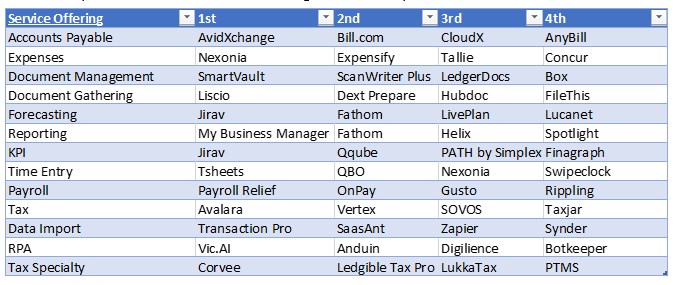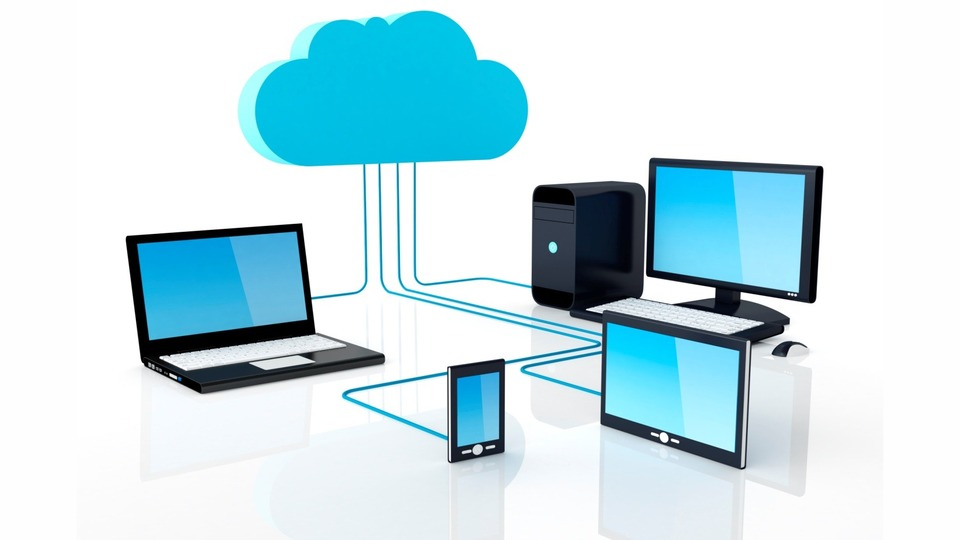Few topics are as near and dear to me as Client Advisory Services. Those of you who have followed both my teaching career around the world for decades, and this column for almost 20 years, know that I’ve tried to bring you the latest in software and hardware technology. In many cases, my software and hardware insights occurred because I’ve been fortunate to advise companies creating these products, and still do so daily. While the actual, sole inventor of Software as a Service (SaaS) based collaborative Client Accounting Services (CAS) may never be known, it has been an honor and a privilege to sit in many of the meetings where these ideas were created.
Authors, tech developers, and consultants will attempt to convince you that they have the best CAS and Advisory answers. While quite a few have developed methodologies to deliver services with their software tools, only a few organizations have developed an independent program. As practitioners, sometimes we just need to solve day-to-day client problems and want a cookbook approach to accomplish this. As advisors, we must rise above the day-to-day and help our clients think strategically about achieving their goals, not ours.
The best analogy I can make for CAS and Advisory is training and education. I have written about this in the past in other columns. Training is more vocational. Education is more holistic. We are educated to become more rounded. We are trained to do something specific. There is nothing wrong with a vocational school to learn a skill. We believe training is beneficial to learn a particular application well as evidenced by my K2 business offering technology CPE courses. Likewise, you are educated initially to become part of a profession and to achieve more noble goals and take CPE to hone your skills.
We can use our talents to do good for our clients and help them achieve their goals. Teachers choose to use their lives to help others and find great rewards while doing so, although monetary rewards are frequently not among them. But the difference teachers make in people’s lives is notable. Each of you has benefited from more than one teacher. Note that most teachers and mentors have also contributed to making you a better professional.
Why the fuss about Advisory and CAS?
First, let’s make it clear that Advisory Services have been available in the profession since the 1930s. Advisory has only become popular in the U.S. market over the last five years or so. I’m aware of 34 Advisory offerings by my latest count, but I’m sure there are more in the market. Advisory requires planning and a “whole-of-client” approach. Advisory is proactive rather than reactive, benefits from true independence, and is more than a methodology to sell services to niches. Advisory may evolve to increasing specialization, but be cautious that this is not simply niche consulting.
Few application software products are genuinely advisory tools. I’m sure there are more, but I only know three and only recommend one. Most software tools are too operational and transactional to maintain the 30,000 views that Advisory Services provide. A product providing cash flow (LivePlan), HR (Gusto), or tax planning (Corvee) may enable a single advisory service. However, a single advisory service doesn’t qualify for a “whole-of-client” approach. A single service is more like consulting than advising.
Accountants that provide Client Accounting Services see opportunities to assist clients first. For example, if there is a cash flow issue, you can see it from the CAS system. If payroll is part of your CAS offering, you can quickly see when labor costs are too high, or there is too much overtime. CAS offerings should be a blend of five to nine offerings to support a client’s transactional needs. Examples of service offerings include Accounts Payable/bill payment, Accounts Receivable/Collections, Expenses, Document Management, Document Gathering, Forecasting, Reporting, KPIs, Time Entry, Payroll, Sales Tax, Tax Returns, Data Import, RPA/automated workflow, Tax Specialty (Property, Planning), and more. We prefer offerings that are billed at a flat rate as a package, in advance via ACH, and reviewed annually to reset the fees for that client.
While many profess “throwing away the timesheet,” we believe that time tracking establishes the people costs of services and that workflow is needed to assure that no balls are dropped and that all due dates are met. Standard operating processes or workflows are mandatory to optimize profitability. Automation of transactions with pre-accounting or automation tools like Vic.ai, Hubdoc, Anduin, Digilence, Sage AutoEntry, Dext, FileThis, and Botkeeper can optimize the input cycle and provide scale without adding labor on-shore or off-shore.
How Do We Choose CAS Tools?
If you are starting a CAS practice today, you should pick a SaaS toolset. While many accounting platforms could be used to provide CAS services, a few leaders for the profession have evolved, including Accounting Power, QuickBooks Desktop or Online, Sage Intacct, and Xero. Other candidates include AccountingSuite, Acumatica, Aplos, Thomson Accounting CS, and Zoho Books.
A complete system like Accounting Power with Payroll Relief will provide the most efficiency and profitability because it includes bill payment/AP, expense processing, ACH support, workflow, and a tightly integrated payroll. This minimizes your efforts to choose and pay for additional tools to provide a complete service, as you will see below. Founders Chandra and Sharda Bhansali and their team have built a highly efficient, effective, and profitable system that you can use with your clients in a matter of 30 to 60 days. Further, they have an offering this year that reduce your costs further and allow effective conversion from Intuit Online Payroll (IOP) to the Payroll Relief platform.
You can build a system by choosing a base accounting product like QuickBooks or Xero and choose additional tools to integrate and maintain. You need to choose your base product and partners carefully with a provider that values accounting professionals. The accounting profession should not be a sales channel, but many software publishers believe that accountants can be used to sell their products to customers. You want a software publisher that will help you with your clients.
Brian Tankersley and I have developed and maintained a grid of solutions that have evolved through the years. While not a specific recommendation, this grid from a recent consulting engagement shows some of the products that could be used to augment a base system to deliver a service.

[Click image to enlarge.]
A quick history lesson
Recall that the transition from write-up to in-house accounting to Client Accounting Services has been circuitous. Write-up tools allowed our firms to be very efficient at taking client records, converting them to trial balances, making adjusting entries, and preparing financial statements, which could be used to prepare tax returns. Initially, this work was done with service bureaus and mini-computers. However, as accounting software and computer hardware become more affordable, many smaller clients chose to take their accounting in-house with Peachtree (now Sage 50cloud), Quicken (no longer owned by Intuit), QuickBooks, and One-Write.
[Continue Reading online at https://www.cpapracticeadvisor.com/21226573]
The first breakthrough for Client Accounting Services occurred when applications could be hosted. When Intuit and Sage finally concluded that they would allow hosting companies to install and run QuickBooks and Peachtree, collaborative accounting was born. While lucky enough to contribute some ideas and approaches to this thinking, which led to the Intuit commercial and standard hosting programs (http://www.intuithostingprogram.com/), we knew the second breakthrough was not far behind.
That second breakthrough came when we assisted with some of the earliest accounting programs that ran in a browser. Accounting Power, NetSuite, QuickBooks Online, and Sage Intacct all came out of this period in the late 1990s as developers started to leverage the increasing availability and speed of the internet plus the ubiquity of the browser. Thus, collaboration in real-time for small businesses was born.
How Do We Choose Advisory Tools?
The best advisors always put the client first in their advisory practice. I had committed to continue coverage on the 30+ advisory services you can offer in prior columns, and we’ll point you to more true advisory options instead of the “fake” advisory commonly promoted. We’ll also learn more about “whole-of-client” at a future time. We recommend that you build an advisory culture in your firm. The best way to start is with solid advisory education.
First, make sure you take the time to learn how to create an advisory practice with resources like Upward Spiral North America, Oodles, or Advisory 101. We also have Advisory course content at K2 Enterprises on our online website. Second, remember that advisory services are proactive and not reactive and involve more recurring client advice and less consultation. We’ll be covering many of these advisory tools in our Technology Lab Podcast.
The Advisory 101 advisory series has three progressive stages in twelve modules. In addition to CPE credits, you are completing each stage awards three Advisory Certifications (Foundation, Diploma, Advanced Diploma), providing your team with the knowledge, understanding, and credibility you need to be successful.
Foundation
1. Why Advisory? – What Clients Want, Not Just Need
2. Compliance Harmony – Creating balance between advisory and compliance
3. Onboarding Clients and Business Development for Fee Growth – Creating the Value Proposition
Diploma
4. How to Build Advisory Services – Strategic Planning, Coaching, and more
5. How to Roll-out Advisory Services – Where to Start, and How to Approach Clients
6. How to Maximize Advisory Fees – Core Planning and the Financial Benefits of Secondary/Tertiary
7. How to Price Advisory – Cost, Ideal, and Walk Away
8. How to Close on Advisory – Economic Symbiosis™ and the Advisory Value Proposition
Advanced Diploma
9. The Science Behind Engagement and Trust – Why Clients behave the way they do
10. Getting Serious About Advisory Growth – WIN driving growth, BUSY is a 4 letter word, space
11. Getting Serious About Advisory Marketing – Messaging and Brands
12. Getting Serious About Advisory Process – Acquiring a Delivery Platform and SOPs
Developed by four leading accounting professionals with decades of experience in advisory, this course is the capstone summary of their collective knowledge and their proven methodologies. You can use their systems and approach to build a successful advisory practice of your own while avoiding many common rookie mistakes. In addition, these modules help you develop your own methodologies to provide high-value professional, effective, targeted independent advice rather than the generic low-value add-on sales programs promoted by many software vendors (sometimes called “fake advisory”).
Finally, you can support your evolving Advisory practice with tools like the Complete Advisory Solution or Thomson Reuters Accounting advisory services, including Practice Forward.
So, What Can We Do Today?
First, decide if you are satisfied with your practice as it stands now. Do you like your compliance and consulting practice? Are you providing the services your clients want? Most importantly, are you providing the services your clients need? Are you working hard, or are you working smart?
As I noted in many previous columns, most CPAs I know want to and do serve their clients well. However, do you always want to have the client’s best interest and goals in mind? Have you developed both a personal plan and a business plan with your client? Are you sure they have all their personal and business assets protected? Do you know that they have a valid will or trust in place? Since it is estimated that 15 trillion dollars will be transferred from one generation to the next in this decade, how do you help your clients transfer or dispose of their personal and business assets in the best way possible? How do you minimize the impact of tax law changes?
You need to apply advisory thinking to your practice and pick technology tools to support those efforts. Use the whole-of-client advisory approach to build a practice and relationships that can last for decades and generations. Assist with day-to-day transactions with CAS. Look for services that your client base needs and provide those as a packaged bundle. And always look for ways to create the very best client experience!
======
Randy Johnston is a nationally recognized educator, consultant, and writer with over 40 years experience in Strategic Technology Planning, Systems and Network Integration, Accounting Software Selection, Business Development and Management, Disaster Recovery and Contingency Planning, and Process Engineering.
Thanks for reading CPA Practice Advisor!
Subscribe Already registered? Log In
Need more information? Read the FAQs





